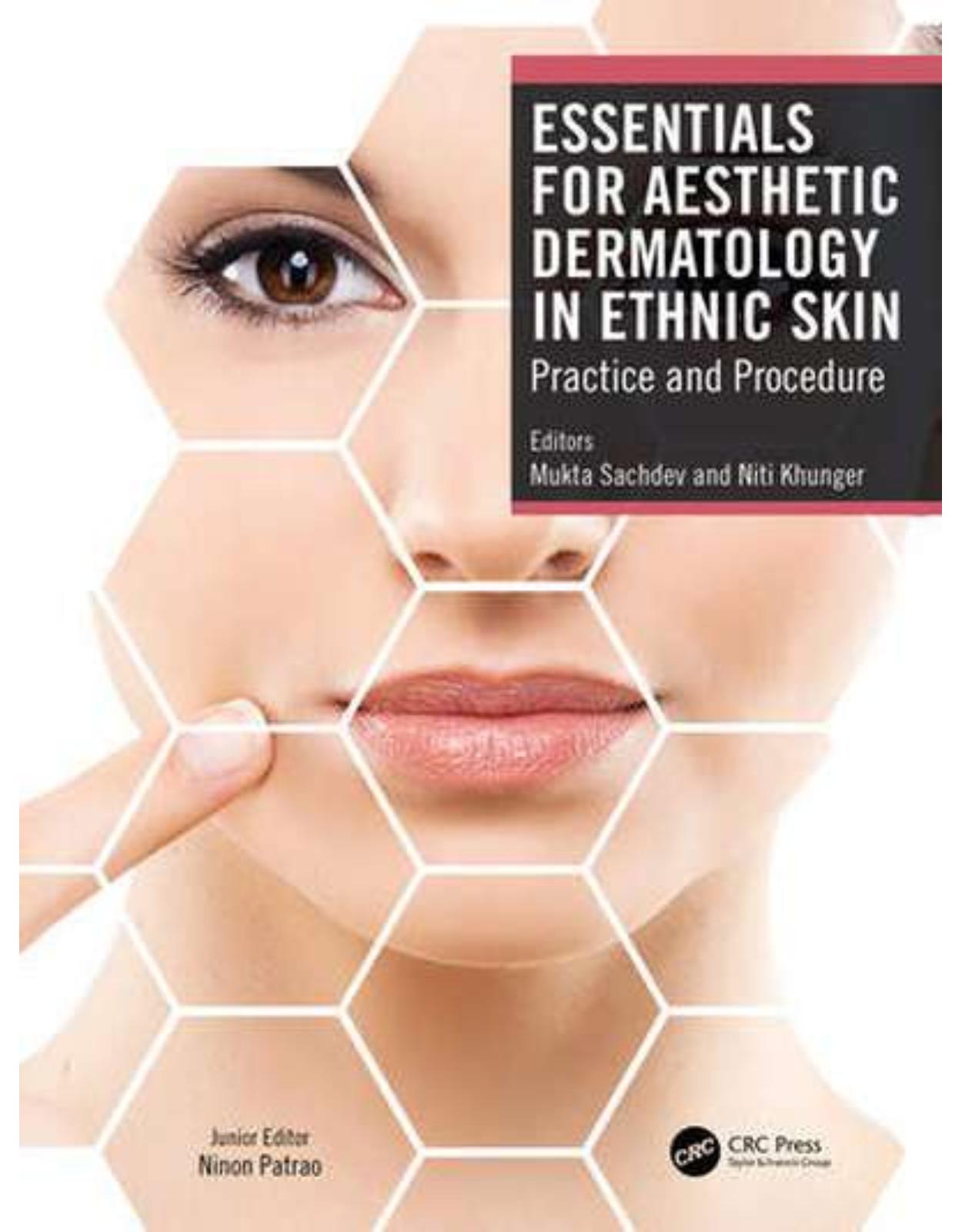
Essentials for Aesthetic Dermatology in Ethnic Skin
Livrare gratis la comenzi peste 500 RON. Pentru celelalte comenzi livrarea este 20 RON.
Disponibilitate: La comanda in aproximativ 4 saptamani
Autor: Mukta Sachdev, Niti Khunger
Editura: CRC Press
Limba: Engleza
Nr. pagini: 268
Coperta: Hardcover
Dimensiuni:
An aparitie: May 2023
Description:
This book focuses on creating awareness and detailing the nuances of aesthetic dermatology practice in skin of color. It highlights practical considerations in pre-/intra-/post-procedure care with an emphasis on patient selection for aesthetic procedures and the associated challenges involved in real-time practice. It aims to cater to audiences of countries with both high and low populations of dark-skinned patients, as clinicians often have limited experience in treating this group. Numerous topics are explored through case-based discussions and practical tips. This is a practical ready reference manual for a cosmetic dermatologist dealing with darker skin. Key Features Covers the geo-ethnic skin types of Asians, Southeast Asians, Africans, and Hispanics Explores the topics through case-based discussions Provides comprehensive details about the use of machines on skin of color
Table of Contents:
Part I: Fundamentals in Understanding Ethnic Skin/Skin of Color
1 Introduction
2 Anatomy: Skin, Hair, Nails
3 Factors Affecting Skin Integrity
3.1 Introduction
3.2 Microbiome
3.3 Endocrine
3.4 Climate
3.4.1 Sunlight and Humidity
3.4.2 Cold and Dry
3.5 Allergens and Irritants
3.5.1 Skin
3.5.2 Hair
3.5.3 Genetic
3.5.4 Cultural Practices
3.5.5 Aging
3.6 Conclusion
4 Geo-Ethnic Variations in Skin
4.1 Introduction
4.2 The Origin of Humans
4.3 Differences in Skin Coloration
4.4 Racial Differences in Stratum Corneum Structure
4.5 Racial Differences in Epidermal-Dermal Function
4.6 Racial Differences in Cutaneous Appendages: Eccrine, Apocrine, and Apoeccrine Sweat Glands
4.7 Sebaceous Glands
4.8 Cutaneous Irritation in Different Racial Groups
4.9 Clinically Relevant Structural and Functional Differences
4.10 Complications
Part II: Cases Encountered in Cosmetic Dermatology Practice
5 Sensitive Skin
5.1 Definition
5.2 Introduction
5.2.1 Key Considerations before Moving Forward with Cosmetic Procedures
5.3 Aesthetic Procedures and Considerations in Skin of Color
5.3.1 Chemical Peels
5.3.2 Lasers
5.3.3 Hair Removal
5.3.4 Injectables
5.3.5 Microdermabrasion (MDA)
5.3.6 Hair Transplantation
5.3.7 Other Considerations: Keloids and Hypertrophic Scars
5.4 Conclusion
6 Acne Vulgaris
6.1 Introduction
6.2 Classification
6.2.1 Mild Acne Vulgaris
6.2.2 Moderate to Severe Acne Vulgaris
6.3 Epidemiological and Etiological Aspects
6.3.1 Acne Grading System
6.4 Investigations
6.5 Management/Approach to Ethnic Skin
6.6 Clinical Pearls in Treating Skin of Color
6.7 Conclusion
7 Rosacea
7.1 Introduction
7.2 Epidemiology
7.3 Pathophysiology of Rosacea in Skin of Color
7.4 Clinical Features and Subtypes of Rosacea
7.5 Differential Diagnoses to Be Considered in Patients with Skin of Color
7.6 Treatment of Rosacea
7.7 General Measures/Non-Pharmacologic Treatments
7.7a Patient Education
7.7b Photoprotection/Sunscreens
7.7c Facial Cleansers
7.7d Facial Moisturizers
7.8 Conclusion
8 Pigmentary Disorders
8.1 Introduction
8.2 Hyperpigmentation
8.2a Acquired Diffuse Hyperpigmentation
8.2b Hyperpigmentation of Genetic/Nevoid Origin
8.2c Acquired Localized Hyperpigmentation
8.2d Drug-Induced Hyperpigmentation
8.2e Reticulate Pigmentary Disorders
8.2f Hyperpigmentation Affecting Flexures
8.2g Pigmented Lesions in Oral Mucosa
8.2h Pigmented Lesions of the Vulva
8.3 Hypopigmentation Disorders
8.3a Piebaldism
8.3b Waardenburg Syndrome
8.3c Albinism
8.3d Griscelli Syndrome
8.3e Ash Leaf Macules
8.3f Nevus Anemicus
8.3g Nevus Depigmentosus
8.3h Hypomelanosis of Ito
8.3i Idiopathic Guttate Hypomelanosis
8.3j Vitiligo
8.3k Other Hypopigmentation Disorders
8.4 Conclusion
9 Contact Dermatitis
9.1 Introduction
9.2 Allergic Contact Dermatitis
9.2.1 Epidemiology
9.3 Risk Factors
9.4 Ethnicity
9.5 Pathogenesis
9.6 Sensitization Phase
9.7 Elicitation Phase
9.8 Clinical Presentation
9.8.1 Localized ACD
9.8.2 Systemic/Generalized CD
9.8.3 Non-Eczematous ACD
9.8.4 Allergic Contact Urticaria (ACU)
9.8.5 Diagnosis
9.9 Patch Test
9.9.1 Types
9.10 Conclusion
10 Keloids and Hypertrophic Scars
10.1 Introduction
10.1.1 Etiology
10.1.2 Psychological Impact
10.1.3 Case
10.1.4 Standard Guidelines of Care for Keloids and Hypertrophic Scars
10.2 Conclusion
11 Hirsutism
11.1 Introduction
11.2 Epidemiology
11.3 Pathophysiology
11.3.1 Types of Hair
11.3.2 Normal Enzymatic Activity of the Skin
11.3.3 Androgens and Hair Growth
11.3.4 Insulin Resistance and Hirsutism
11.4 Etiology
11.5 Clinical Features
11.6 Classification of Severity
11.7 Approach to a Hirsute Patient
11.8 Management
11.9 Conclusion
12 Hair Loss and Hair Disorders
12.1 Introduction
12.2 Diffuse Non-Scarring Hair Loss
12.2a Androgenetic Alopecia
12.2b Telogen Effluvium
12.2c Loose Anagen Hair Syndrome
12.3 Patchy Non-Scarring Alopecia
12.3a Alopecia Areata
12.3b Traction Alopecia
12.3c Pressure Alopecia
12.3d Trichotillomania
12.3e Tinea Capitis
12.4 Cicatricial Alopecia
12.4a Central Centrifugal Cicatricial Alopecia
12.4b Lichen Planopilaris
12.4c Frontal Fibrosing Alopecia
12.4d Chronic Cutaneous Lupus Erythematosus
12.4e Folliculitis Decalvans
12.5 Hair Shaft Disorder
12.5a Chemotherapy-Induced Hair Loss
12.6 Conclusion
13 Periorbital Conditions in Ethnic Skin
13.1 Introduction
13.2 Functional Periorbital Anatomy
13.3 Periocular Wrinkles
13.3.1 Crow’s Feet
13.3.2 Horizontal Forehead Lines
13.3.3 Glabellar Frown Lines
13.3.4 Brow Contouring
13.4 Periocular Hills and Valleys
13.4.1 The Valleys
13.4.2 The Hills
13.5 The Dark Circles (Periocular Hyperpigmentation)
13.6 Dermatochalasis and Blepharochalasis
13.6.1 Preoperative Evaluation
13.6.2 Blepharoplasty Surgery
13.7 Transcutaneous Lower-Lid Blepharoplasty
13.8 Conclusion
14 Psychological Concerns in Ethnic Skin
14.1 Disorders of Pigmentation
14.1.1 Vitiligo
14.1.2 Melasma
14.1.3 Acne and Post-Inflammatory Hyperpigmentation
14.2 Hair/Scalp
14.2.1 Alopecia
14.2.2 Pseudofolliculitis Barbae (Razorbump)
14.2.3 Perifolliculitis Capitis Abscedens et Suffodiens (Dissecting Cellulitis)
14.3 Others
14.3.1 Keloids
14.3.2 Sarcoidosis
14.3.3 Eczema
14.3.4 Psoriasis
14.4 Conclusion
Part III: Cosmeceuticals
15 Physical Photoprotection, Cosmetic Camouflage, and Sunscreens
15.1 Introduction
15.2 Sunlight
15.2.1 Physical Means of Photoprotection
15.2.2 The UPF of a Fabric Depends Upon
15.3 Sunscreens
15.3.1 Primary Photoprotection
15.3.2 Secondary Photoprotection
15.4 Characteristics of a Perfect Sunscreen
15.5 Sunscreen Labels
15.6 Application and Reapplication
15.7 Quantity
15.8 Shelf Life
15.9 Advice for Children
15.10 Safety
15.11 Adverse Reactions
15.12 Contraindications
15.13 Precautions
15.14 Sunscreen for Lips and Eyes
15.15 Sunscreen and Pollution
15.16 Controversies
15.17 Sunscreen and Its Effect on Vitamin D (“Sunshine Vitamin”)
15.18 Effect on Ecosystems
15.19 Oral Photoprotection
15.20 Sunscreen and Insect Repellents
15.21 Camouflage and Cosmetics
15.22 Skin of Color and Use of Sunscreen
15.23 Conclusion
16 Cleansers and Moisturizers
16.1 Introduction
16.2 Cleansers
16.3 Additional Considerations
16.3.1 Acid-Base Balance
16.3.2 Bar versus Liquid
16.3.3 Preservatives
16.3.4 Enhancers
16.3.5 Choosing a Product
16.4 Moisturizers
16.4.1 Occlusives
16.4.2 Humectants
16.4.3 Emollients
16.4.4 Preservatives
16.4.5 Enhancers
16.4.6 Choosing a Product
16.4.7 Clinical Pearls in Treating Skin of Color
16.5 Conclusion
17 Topical Anti-Acne Agents
17.1 Introduction
17.2 Treatment of Acne
17.2.1 Do Topicals Work in the Treatment of Acne?
17.3 Classification of Anti-Acne Agents
17.3.1 Antimicrobial Agents
17.3.2 How to Choose an Anti-Acne Agent
17.3.3 Side Effects of Antibacterials and Their Management
17.4 Hydroxyl Acid
17.5 Topical Retinoids
17.6 Combination Therapies
17.7 Anti-Acne Agents in Special Categories
17.7.1 Children
17.7.2 Pregnancy
17.8 Novel Approaches in the Treatment of Acne
17.8.1 Liposomal Formulation of Retinoids
17.8.2 Microsponges
17.8.3 Microspheres
17.8.4 Mechanical Treatments
17.9 Procedural Therapies in Acne
17.10 Newer/Emerging Topical Anti-Acne Agents
17.11 Conclusion
18 Lightening Formulations
18.1 Introduction
18.2 Indications
18.3 Classification
18.3.1 Lightening Formulations That Regulate Melanocyte Activation
18.3.2 Lightening Formulations That Reduce Melanogenesis
18.3.3 Lightening Formulations That Inhibit Melanosome Transfer to Keratinocytes
18.3.4 Lightening Formulations That Remove Epidermal Pigment
18.4 Clinical Pearls in Treating Ethnic Skin/Skin of Color
19 Anti-Aging Agents for Ethnic Skin
19.1 Introduction
19.2 Classification
19.2.1 Sunscreens
19.2.2 Retinoids
19.2.3 Alpha- and Beta-Hydroxy Acids
19.2.4 Antioxidants
19.2.5 Polyphenol/Flavonoid Antioxidants
19.2.6 Hormonal Agents
19.2.7 Growth Factors
19.2.8 Peptides
19.2.9 Anti-Aging Minerals
19.2.10 Nutraceuticals Targeting Advanced Glycation End Products
19.3 Clinical Pearls in Treating Ethnic Skin
19.4 Indications for Agents
19.5 How to Use and Dosage
19.6 Side Effects
19.7 Choosing a Product
19.8 Conclusion
20 Cosmeceuticals in Hair Care
20.1 Background
20.2 How Do They Differ from Cosmetics and Drugs?
20.3 Other Cosmeceuticals Available for Hair Care
20.3.1 Decoding the Cosmeceuticals Available in the Market
20.4 Where Do Cosmeceuticals Score in Hair Care
20.4.1 Clinical Situations Frequently Encountered in Day-to-Day Practice
20.5 How to Increase the Efficiency of Peptide Penetration
20.6 Tests for Efficacy
20.6.1 Physical Examination of the Scalp
20.7 Conclusion
21 Lip, Nail, and Eye Care
21.1 Introduction
21.2 Lip Care
21.2.1 Specific Anatomical Considerations
21.2.2 Why Do Our Lips Need Separate Care?
21.2.3 Examination of the Lips
21.2.4 Lip-Licking Dermatitis
21.2.5 Lip Balms
21.2.6 Recent Advances and Lip Fillers
21.3 Nail Care
21.4 Nail Cosmetics
21.5 Eye Care
21.5.1 Eye Health
21.5.2 Special Eye Care Measures
21.6 Conclusion
22 Vitamins, Antioxidants, and Proteins
22.1 The Role of Nutrients in Skin Health
22.2 Vitamins
22.2.1 Vitamin A
22.2.2 Vitamin C
22.2.3 Vitamin E
22.2.4 Vitamin D
22.2.5 The B Vitamins
22.2.6 Vitamin K
22.3 Antioxidants
22.4 Proteins and Amino Acids
22.5 Oral Nutraceuticals
22.6 Conclusion
23 Cosmeceutical-Related Dermatitis and Allergies
23.1 Introduction
23.2 Classification
23.3 Epidemiology
23.4 Common Cosmeceutical Allergens
23.4.1 Fragrance
23.4.2 Preservatives
23.4.3 Vitamins
23.4.4 Hydroxy Acids
23.4.5 Botanicals
23.5 Investigation
23.5.1 History and Physical Exam
23.5.2 Patch Testing
23.6 Management
23.6.1 Post-Inflammatory Hyperpigmentation
Part IV: Procedural Considerations for a Patient with Ethnic Skin
24 Evaluation and Assessment for Ethnic Skin
24.1 Introduction
24.2 What Are Consumers Looking For?
24.3 Differences in Intrinsic Aging across Ethnicities
24.3.1 Evaluation of Asian Skin
24.3.2 Evaluation of Southeast Asian Skin
24.3.3 Evaluation of Middle Eastern Skin
24.3.4 Evaluation of African Skin
24.3.5 Evaluation of Hispanic Skin
24.4 Conclusion
25 Aging in Middle Eastern Skin
25.1 Introduction
25.2 Stress and Aging Skin
25.3 Cutaneous Anatomical Features and Aging Skin
25.4 Pigmentary Disorders
25.5 Consultation for the Aging Face
25.6 Case 1
25.7 Cases 2 and 3
25.8 Case 4
25.9 Case 5
25.10 Case 6
25.11 Cases 7, 8, and 9
26 Minimizing Complications in Skin of Color
26.1 General Pre-Treatment Care for Chemical Peels, Microneedling, Microneedling Radiofrequency (MNRF), Platelet-Rich Plasma, and Laser and Light Devices
26.1.1 Pre-Treatment Priming
26.2 Special Considerations While Doing Chemical Peels: Step-by-Step, Shehnaz in Aesthetic Derm
26.3 Special Considerations While Doing Laser Treatments
26.4 Points to Remember before Any Laser Treatment
26.5 Points to Remember Pertaining to Specific Lasers
26.6 Hair Removal Lasers
26.7 Special Considerations While Doing Injectables
27 SOP for an Aesthetic Dermatology Clinic
27.1 Introduction
27.2 What Does Aesthetic Dermatology Comprise?
27.3 The State of Aesthetic Healthcare Practice
27.4 Infrastructure
27.5 Physician Qualifications and Staff Requirements
27.6 Equipment
27.7 Pre-Procedure Checklist
27.8 Procedures That Can Be Performed
27.9 Post-Procedure Care
27.10 Pharmacy and Dispensing
27.11 Telemedicine and Virtual Consultation
27.12 Publicity and Promotion
27.13 The Ethical Issues of Cosmetic Procedures
27.14 Conclusion
Part V: Procedures
28 Chemical Peels
28.1 Introduction
28.2 Indications
28.2.1 Contraindications
28.3 Patient Workup and Counseling
28.3.1 History
28.3.2 Examination
28.3.3 Photographic Documents
28.3.4 Patient Selection
28.3.5 Test Spot Testing
28.4 Pre-Procedure Care
28.5 Procedure
28.5.1 Peeling Technique
28.5.2 Reagents
28.5.2a Tretinoin Peel
28.5.2b Salicylic Acid (SA)
28.5.2c Trichloroacetic Acid
28.5.2d Glycolic Peel
28.5.2e Jessner’s and Modified Jessner’s Solution
28.5.2f Phenol Peel
28.5.3 Procedure
28.6 Post-Procedure Care
28.7 Side Effects and Their Management
28.8 Clinical Pearls in Treating Ethnic Skin/Skin of Color
28.9 Conclusion
29 Microdermabrasion
29.1 Introduction
29.2 Type of Devices
29.2.1 Crystal-Containing MDA
29.2.2 Non-Crystal-Containing MDA
29.2.3 Oxygen MDA (Oxybrasion)
29.3 Mechanism of Action
29.4 Histological Evaluation
29.5 Transdermal Drug Delivery
29.6 The Effect of Skin Barrier Function
29.6.1 Sebum
29.6.2 Skin Hydration
29.6.3 Transepidermal Water Loss (TEWL)
29.6.4 Skin pH
29.6.5 The Effect of Skin Pigmentation
29.6.6 Indications
29.7 Patient Workup/Counseling
29.8 Pre-Procedure Care
29.9 Procedure
29.9.1 Patient Preparation
29.9.2 Device and Equipment Preparation
29.9.3 Operator Preparation
29.9.4 Steps of Treatment
29.10 Post-Procedure Care
29.11 Side Effects and Their Management
29.12 Clinical Pearls in Treating Ethnic Skin
29.13 Special Precautions—Do’s and Don’ts
30 Microneedling
30.1 Introduction
30.2 Mechanisms of Action
30.3 Devices
30.4 Roller MN
30.5 Stamp MN
30.6 Pen MN
30.7 Other Variations in MN Devices
30.8 Patient Considerations and Clinical Assessment
30.9 Operative Techniques
30.10 Post-Procedure Care
30.11 Number and Frequency of Treatments
30.12 Side Effects and Their Management
30.13 Special Precautions
30.14 Conclusion
31 Lasers and Lights
31.1 Introduction
31.2 Biological Characteristics and Classification of Skin of Color
31.3 Lasers in Skin of Color: General Considerations and Precautions
31.4 Laser Hair Removal
31.5 Skin Rejuvenation and Resurfacing
31.6 Endogenous Epidermal and Dermal Pigmented Lesions
31.6.1 Melasma
31.6.2 Ephelides, Lentigines, and Dermal Melanocytosis
31.7 Conclusion
32 Non-Light Energy-Based Devices
32.1 Introduction
32.2 Classification
32.3 Indications
32.4 Radiofrequency
32.5 Nonablative Radiofrequency Skin Tightening
32.6 Classification of Radiofrequency
32.7 Fractional Sublative Radiofrequency
32.8 Nano-Fractional Radiofrequency
32.9 Fractional Microneedling Radiofrequency
32.10 High-Intensity Focused Ultrasound
32.11 Cryolipolysis
32.12 Conclusion
33 Injectables: Toxins—Intrinsic Aspects and Special Precautions
33.1 Introduction
33.2 Botulinum Toxin for Glabella and Forehead
33.3 Treating Lateral Canthal Lines with Botulinum Toxin
33.4 Nasal Tip Elevation with Botulinum Toxin
33.5 Botulinum Toxin Treatment for Perioral Lines
33.6 Botulinum Toxin A Treatment of Masseter
33.7 Botulinum Toxin A for Parotid Gland
33.8 Botulinum Toxin for Chin (Mentalis)
33.9 Botulinum Toxin Treatment for the Neck and Jawline
33.10 Side Effects of Botulinum Toxin Treatment
33.11 Conclusion
33.12 The Future of Botulinum Toxin
33.13 Botulinum Toxin in Times of the Pandemic
34 Injectables: Fillers—Intrinsic Aspects and Special Precautions
34.1 Introduction
34.2 Structural and Functional Differences of Ethnic Skin
34.3 Skin Aging Assessment in Ethnic Skin
34.4 Indications
34.5 Patient Workup/Counseling
34.6 Pre-Procedure Care
34.7 Procedure
34.8 Post-Procedure Care for Ethnic Skin
34.9 Side Effects and Their Management
34.10 Clinical Pearls in Treating Ethnic Skin or Skin of Color
34.11 Special Precautions Do’s and Don’ts
34.12 Precautions during COVID-19 Times for Dermal Fillers, Especially in India
34.13 CK2 Point in Indian Men beyond 40 Years and Bony Resorption
34.14 Conclusion
35A Emerging Techniques: Platelet-Rich Plasma Therapy
35A.1 Introduction
35A.2 Indications
35A.3 Patient Workup/Counseling
35A.4 Pre-Procedure Care
35A.5 Procedure
35A.6 Post-Procedure Care
35A.7 Contraindications
35A.8 Side Effects and Their Management
35A.9 Clinical Pearls in Treating Ethnic Skin/Skin of Color
35A.10 Special Precautions
35B Non-FDA Skin-Lightening Procedures
35C Non-Surgical Thread Lifts
35C.1 Introduction
35C.2 Indications
35C.3 Types of Threads
35C.4 Mechanism of Action
35C.5 Patient Workup/Counseling
35C.6 Pre-Procedure Care
35C.7 Procedure
35C.8 Post-Procedure Care
35C.9 Contraindications
35C.10 Side Effects and Their Management
35C.11 Clinical Pearls in Treating Ethnic Skin/Skin of Color
35C.11.1 Combination Treatments
36 Home-Use Devices: An Overview and Regulatory Aspects
36.1 Introduction
36.2 Hair Reduction
36.2.1 Mode of Action
36.2.2 Clinical Efficacy and Safety
36.2.3 Side Effects and Adverse Incidents
36.3 Skin Rejuvenation
36.3.1 Mode of Action—Thermally Based Technology
36.3.2 Mode of Action—Non-Thermal Technology
36.3.3 Clinical Efficacy and Safety
36.3.4 Side Effects and Adverse Incidents
36.4 Hair Growth Stimulation
36.4.1 Mode of Action
36.4.2 Clinical Efficacy and Safety
36.4.3 Side Effects and Adverse Incidents
36.5 Medical Use of Huds
36.5.1 Mode of Action
36.5.2 Clinical Efficacy and Safety
36.5.3 Side Effects and Adverse Incidents
36.6 Standards
36.6.1 Embedded Lasers—Class 1C
36.7 Regulatory Aspects
36.7.1 General
36.7.2 Regulations outside the European Union and the United States
36.8 Where Does This Leave the Professional Practitioner and the Client?
36.9 Conclusion
Part VI
37 Digital Marketing and Social Media Branding
37.1 Dermatology Trends on Social Media
37.2 More Dermatologists Turn to Social Media to Communicate with Patients
37.3 Increasing Your Brand Awareness
37.4 Five Core Benefits of Social Media Marketing for Dermatologists
37.5 Best Practices for Creating Compelling Content
37.6 Monitoring Your Online Reputation
37.7 Conclusion
Part VII: The Future
38 Newer Cosmeceuticals
38.1 Introduction
38.2 Peptide-Containing Cosmeceuticals
38.2.1 Carrier Peptides
38.2.2 Signal Peptides
38.2.3 Neurotransmitter Peptides
38.3 Platelet-Rich Plasma Cosmeceuticals
38.4 Prebiotic, Probiotic, and Postbiotic Cosmeceuticals
38.5 Conclusion
39 New Devices for Treating Darker Skin Types
39.1 Introduction
39.2 Ethnic Population
39.3 Laser Tissue Interactions
39.4 Anti-Aging Treatments
39.5 Lasers
39.6 Radiofrequency
39.7 Microfocused Ultrasound
39.8 Toxins and Fillers
39.9 Skin Tone and Pigmentation Disorders
39.10 Acne and Other Scarring
39.11 Facial Photodamage and Rejuvenation
39.12 Benign Cutaneous Tumors
39.13 Hair Disorders
39.13.1 Acne Keloidalis Nuchae
39.13.2 Hypertrichosis
39.14 Conclusion
Part VIII
40 Post-COVID-19: Where Are We Headed?
Index
| An aparitie | May 2023 |
| Autor | Mukta Sachdev, Niti Khunger |
| Editura | CRC Press |
| Format | Hardcover |
| ISBN | 9780367198572 |
| Limba | Engleza |
| Nr pag | 268 |
-
1,38700 lei 1,26900 lei

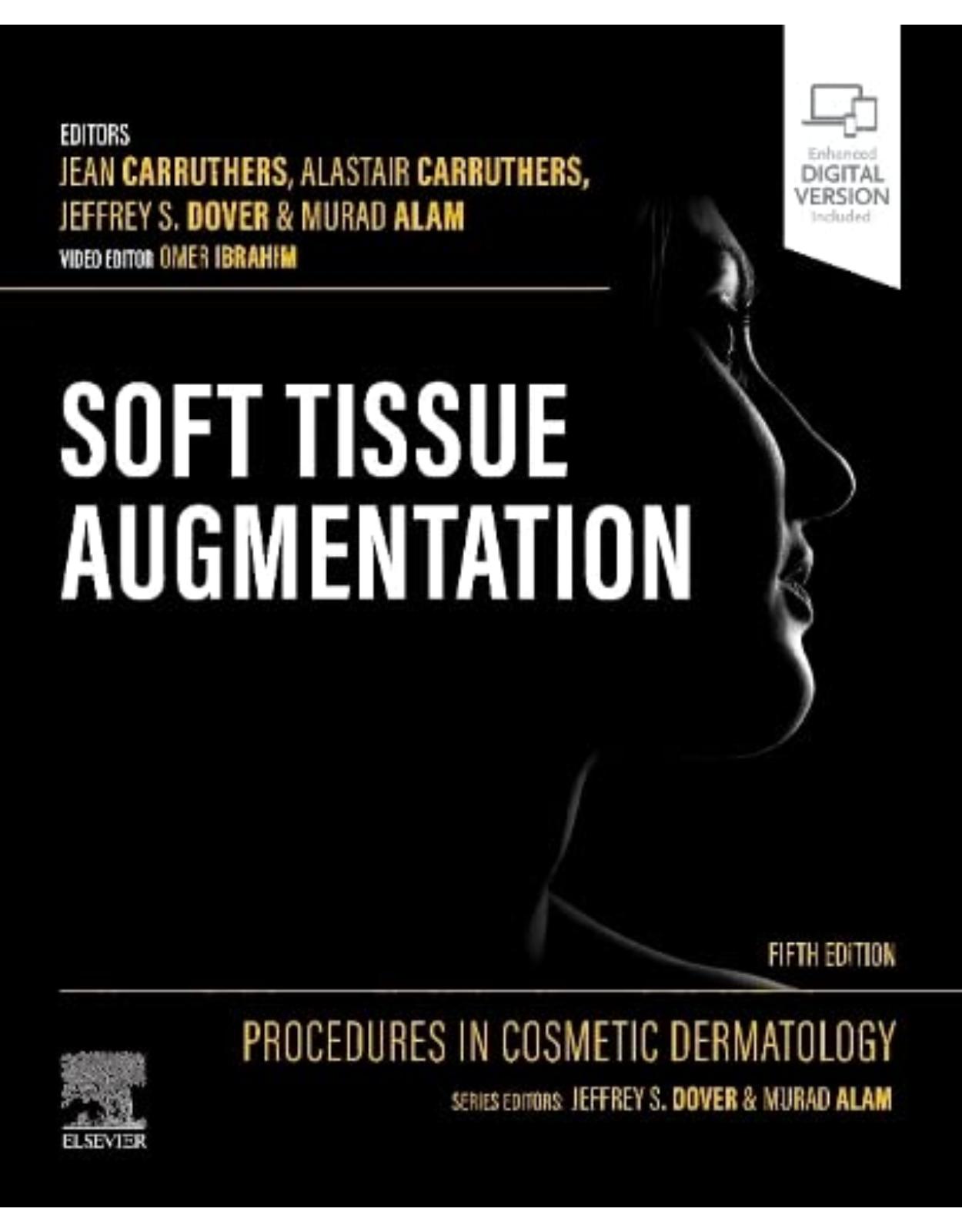
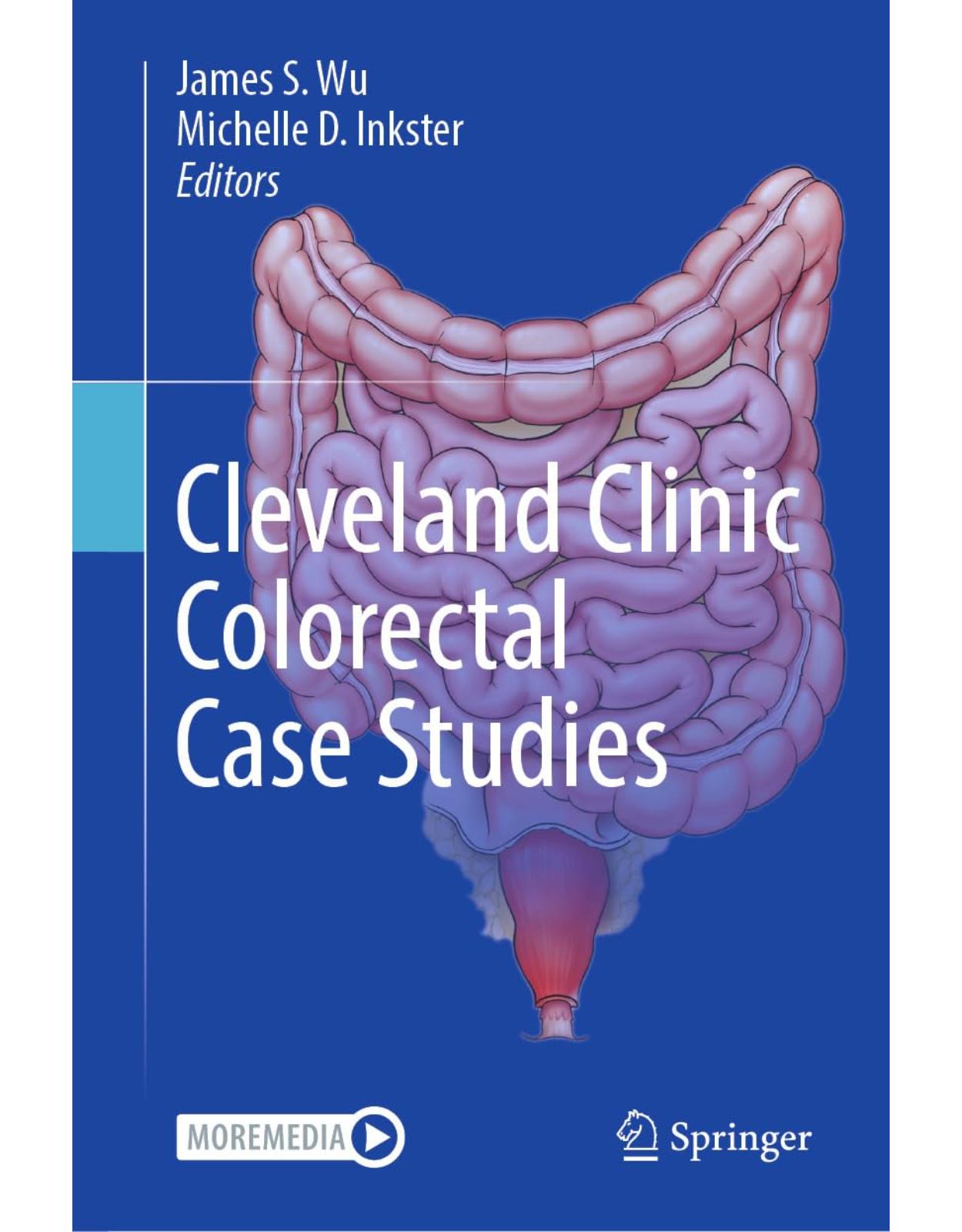
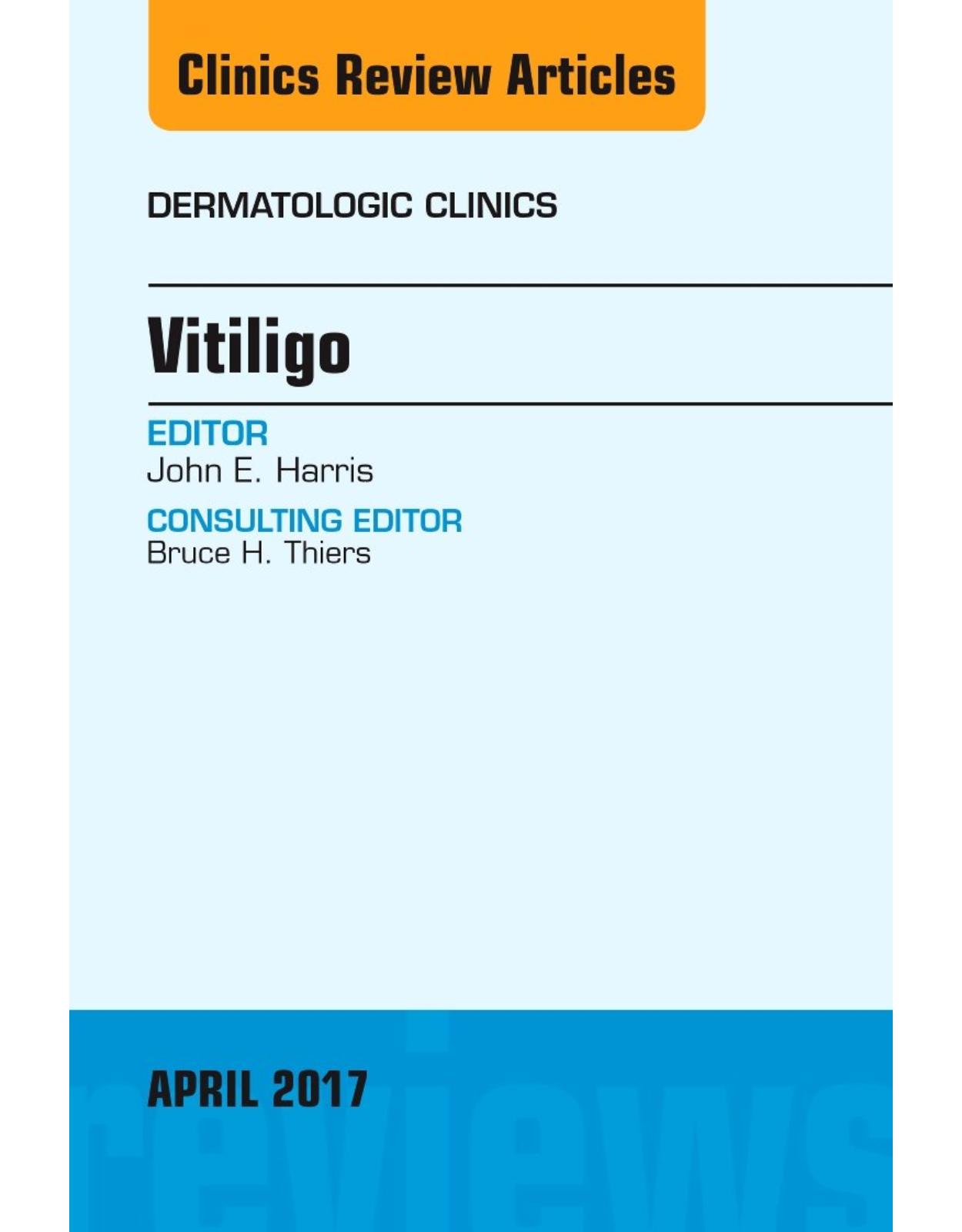
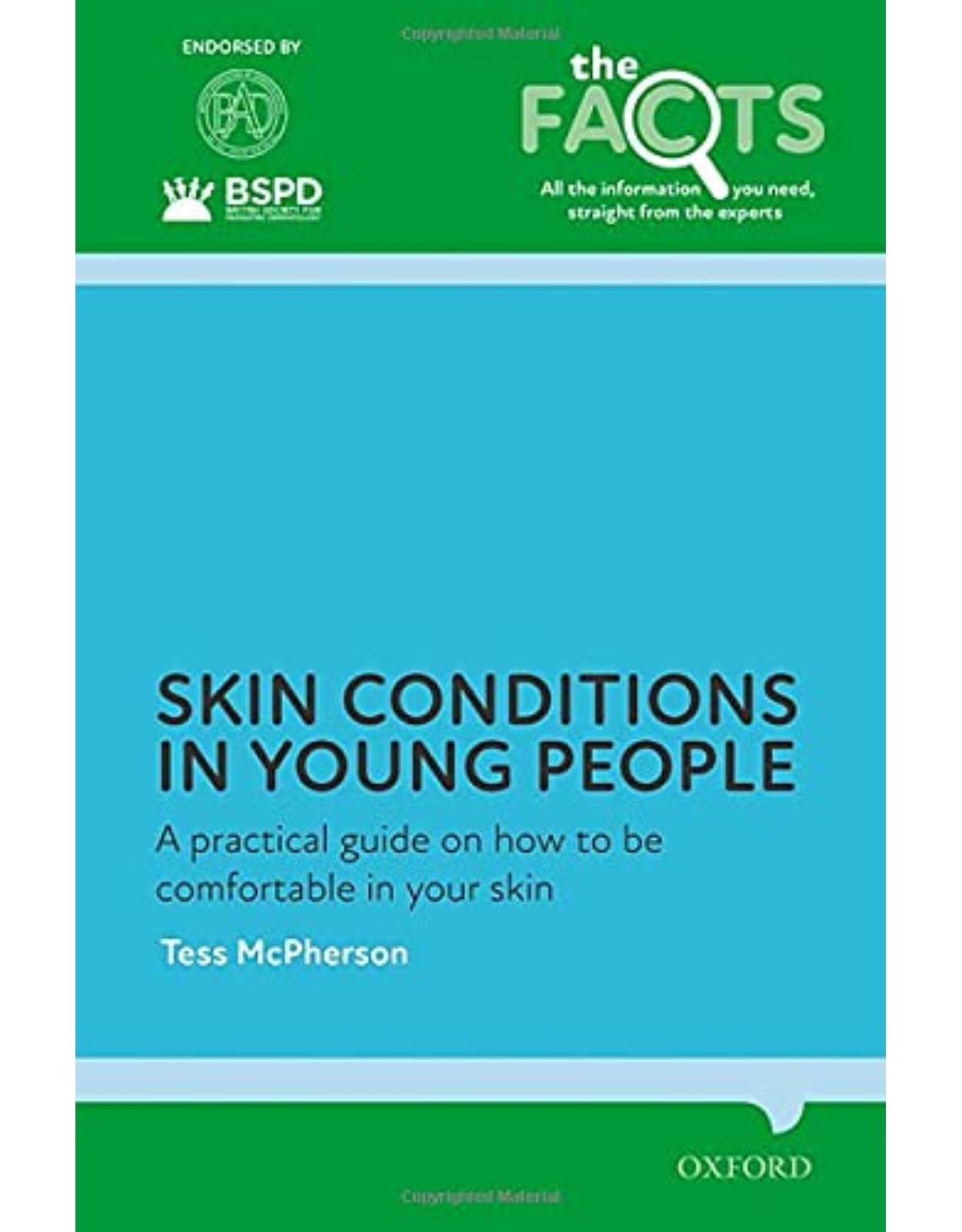
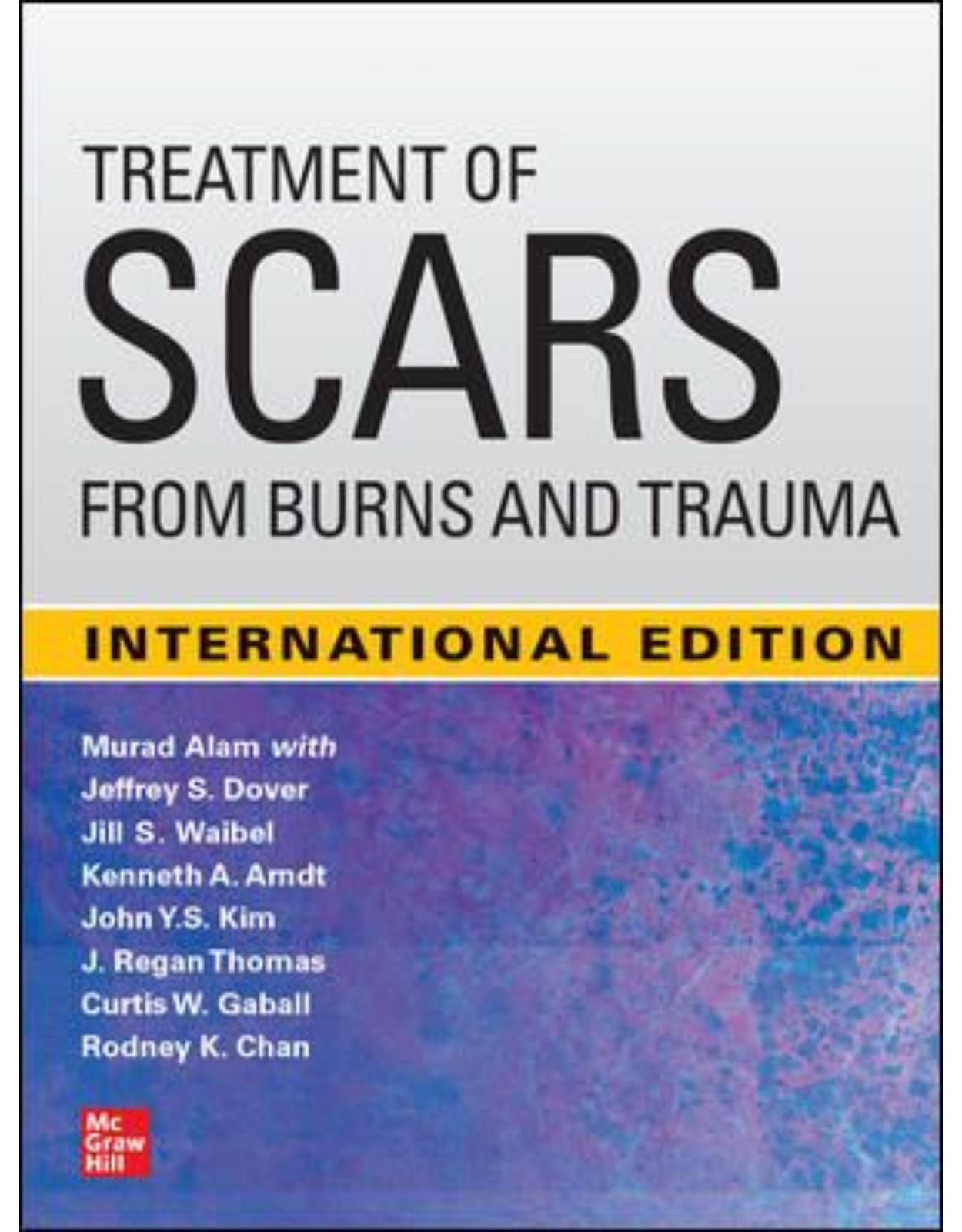
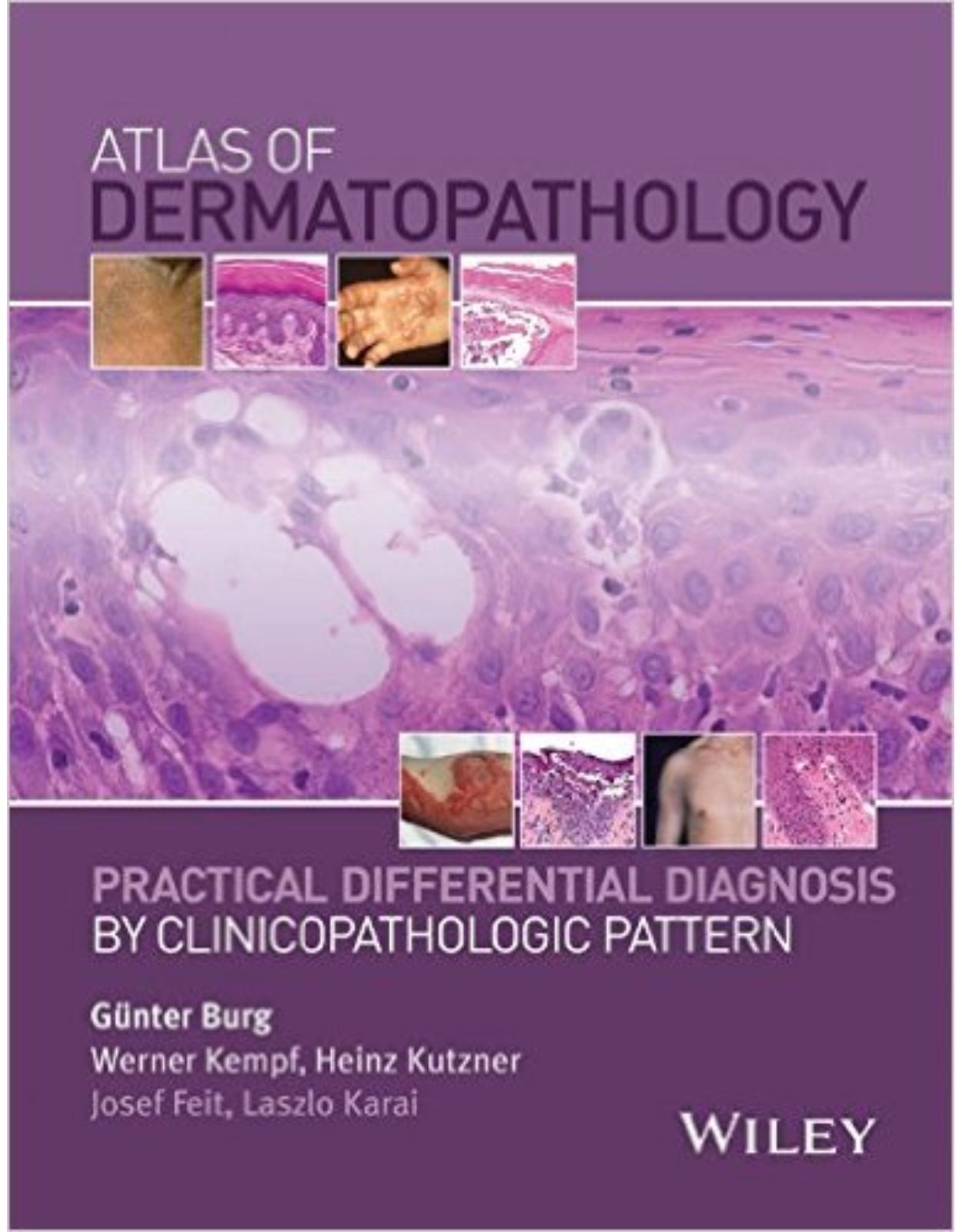
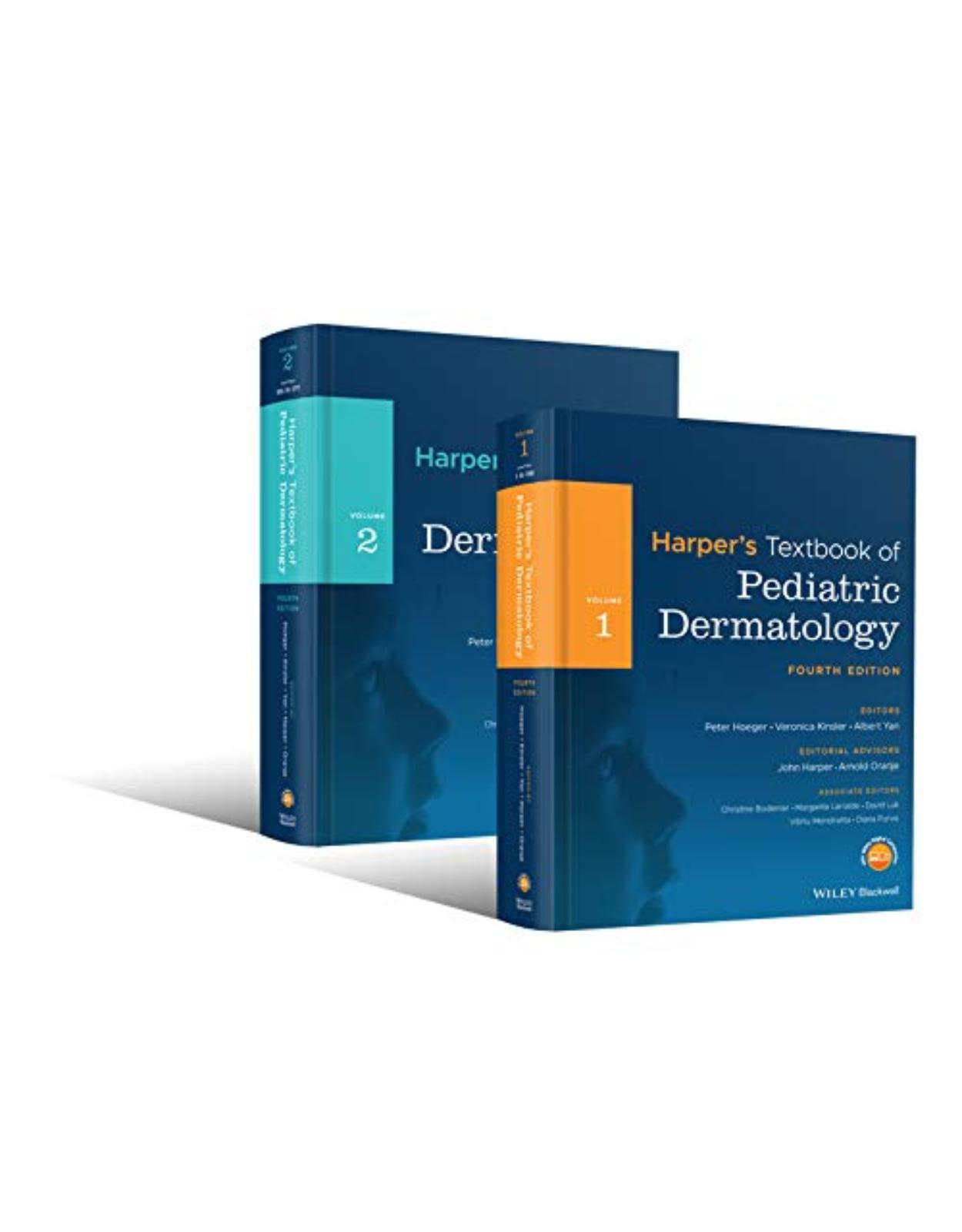
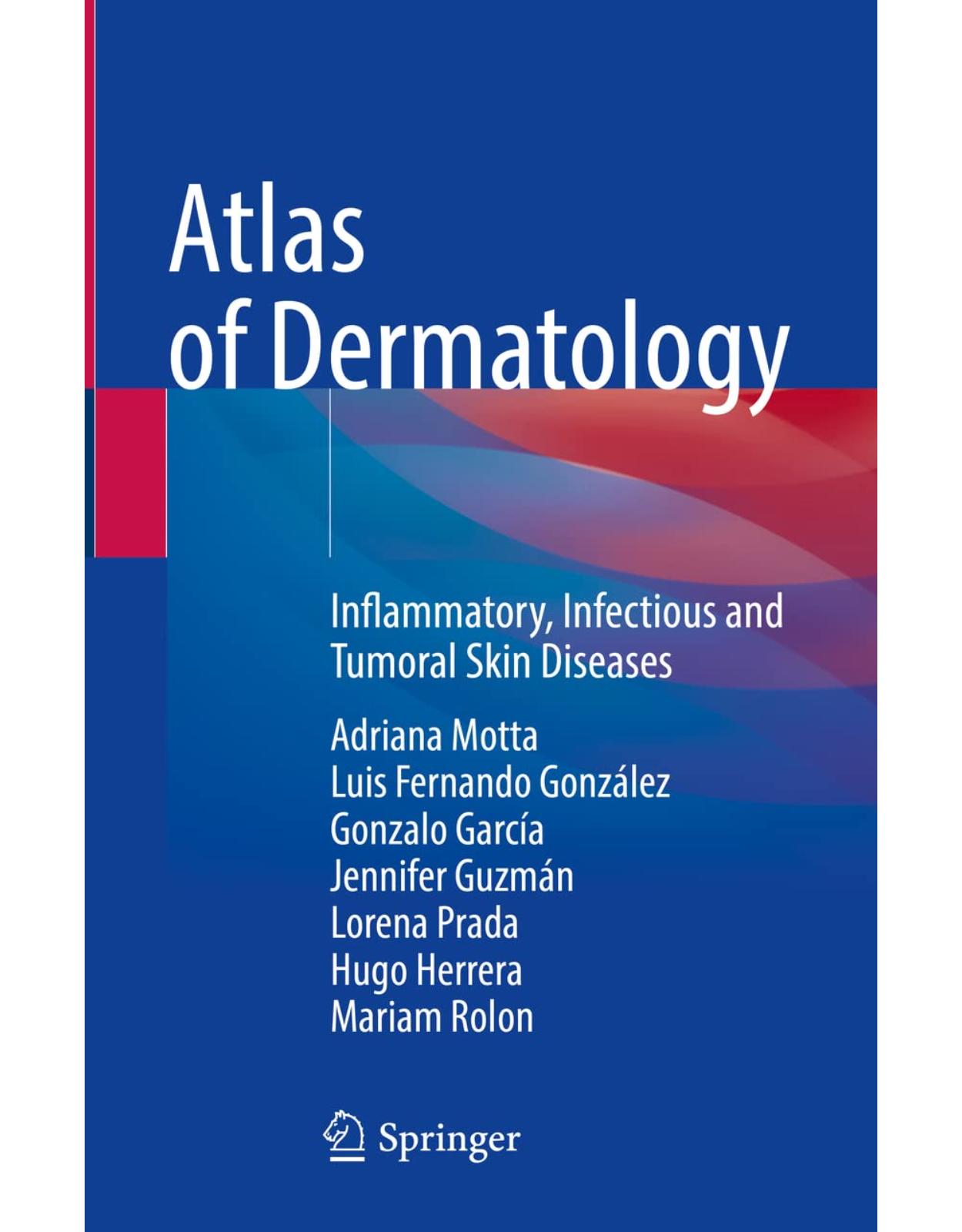
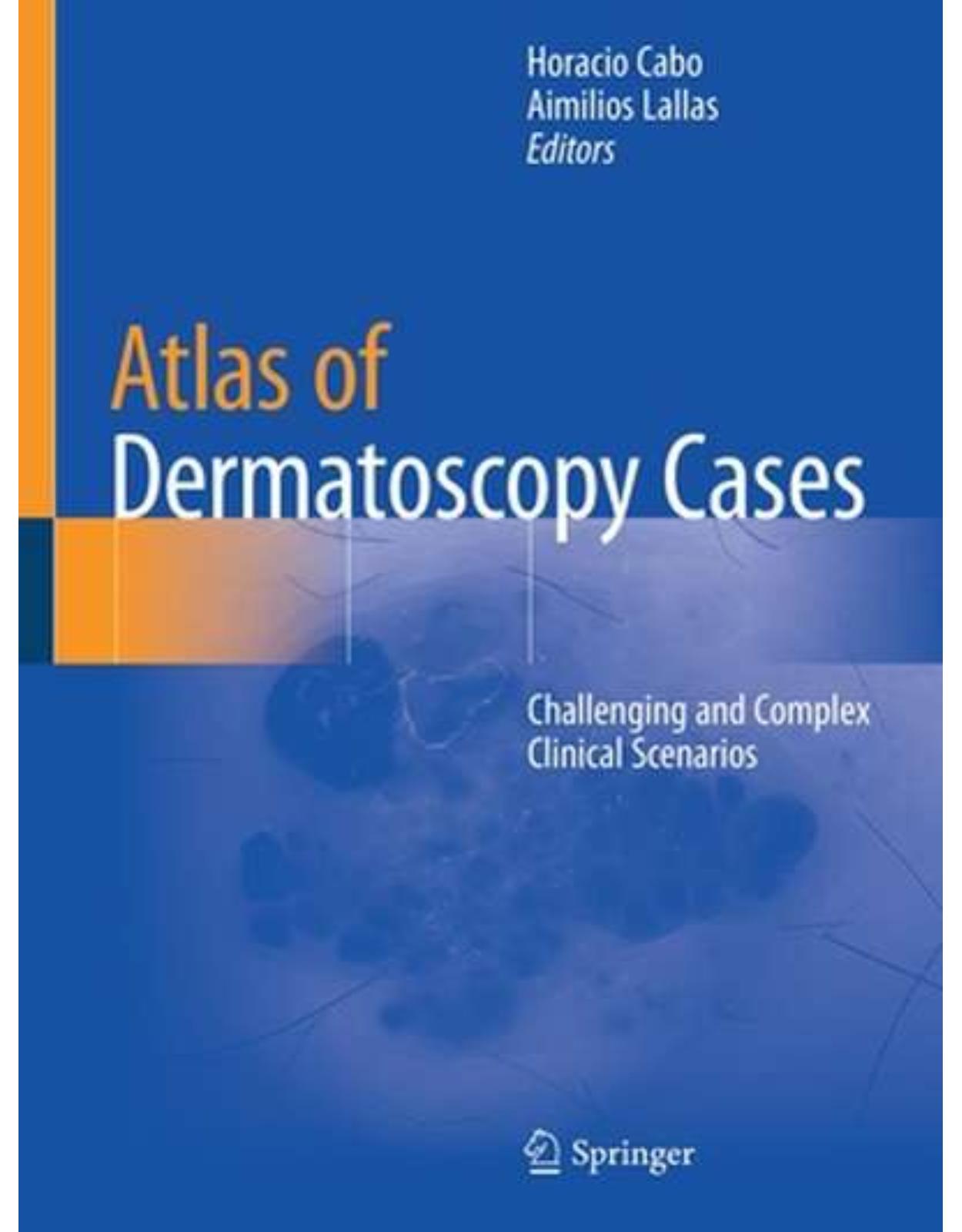

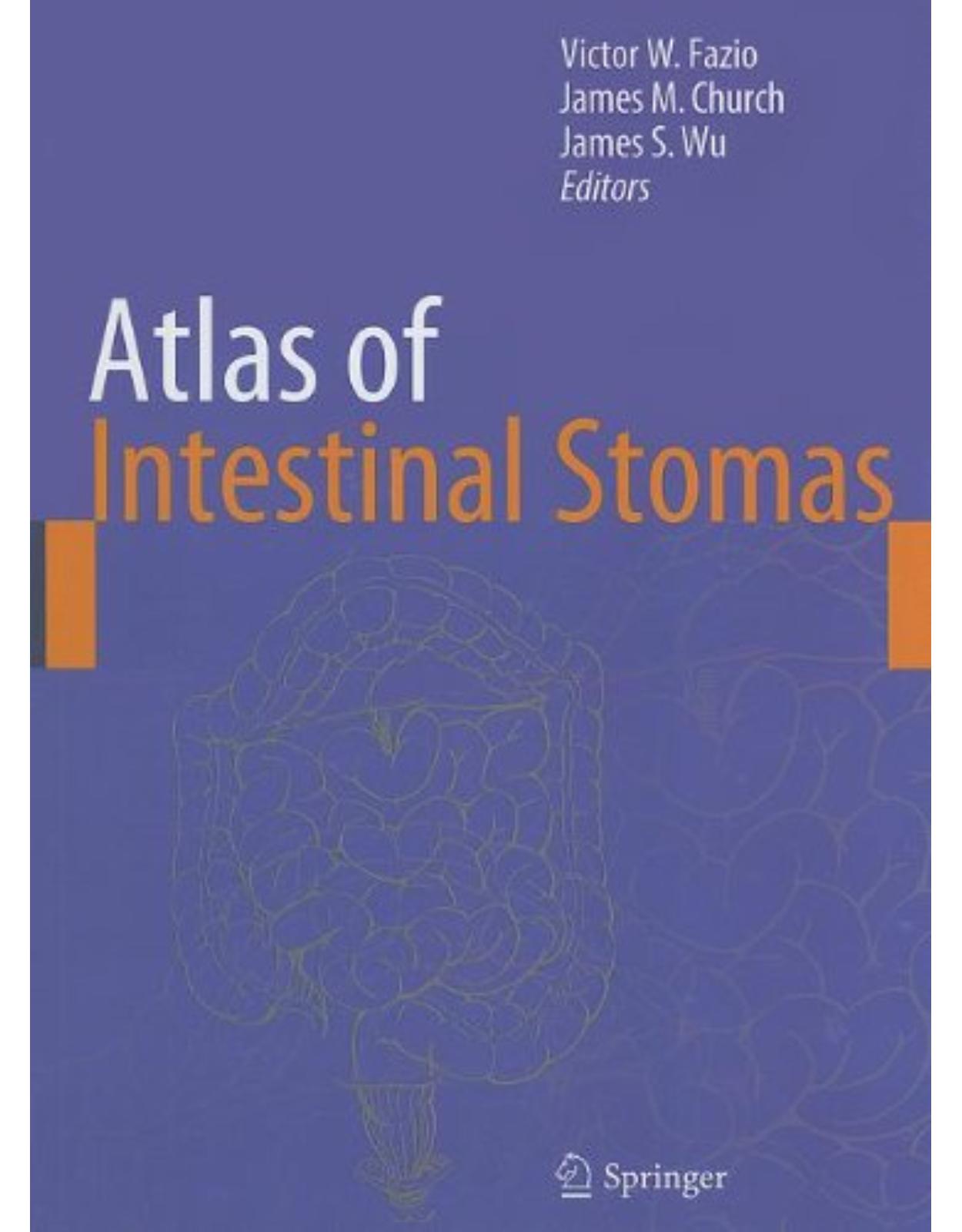
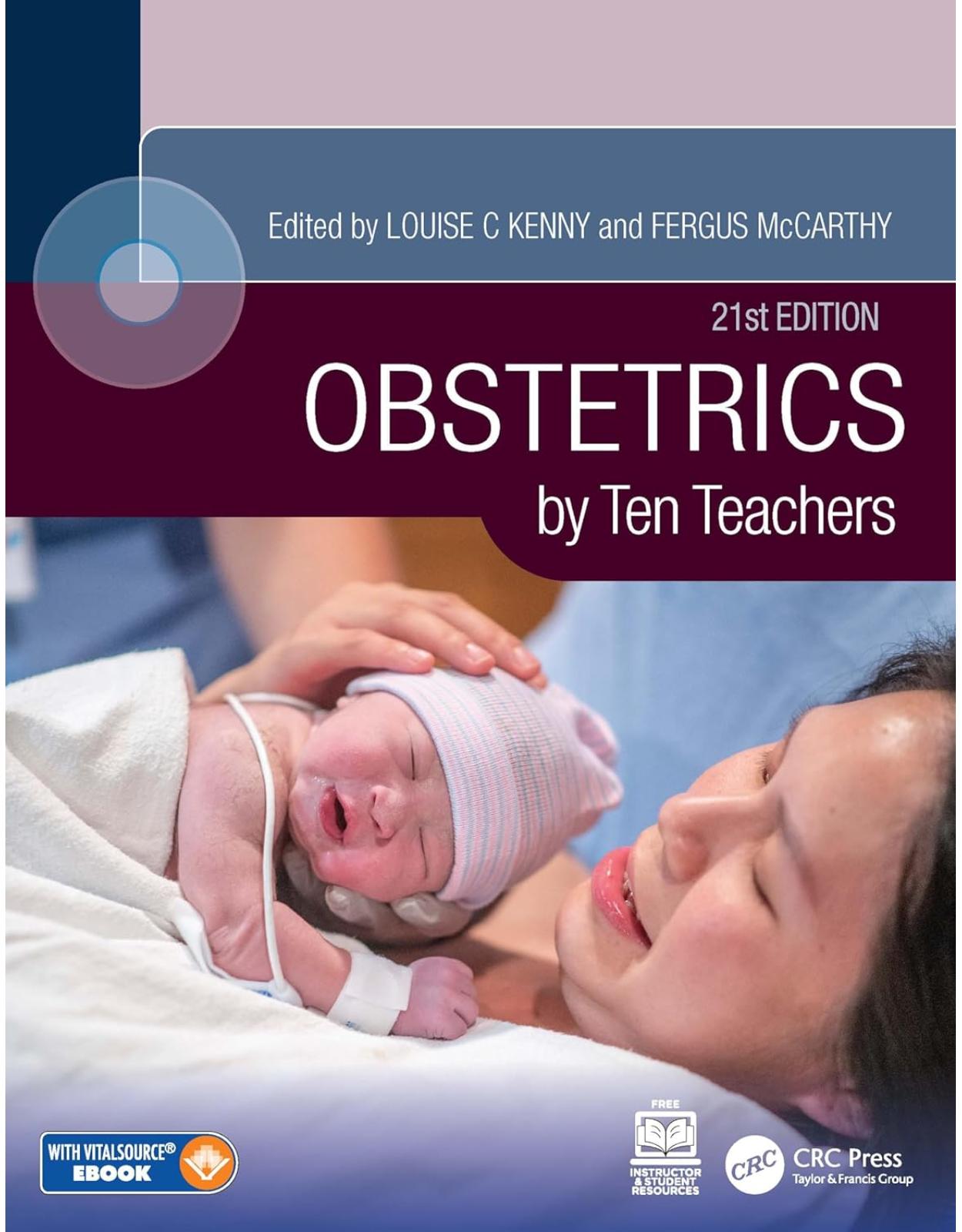
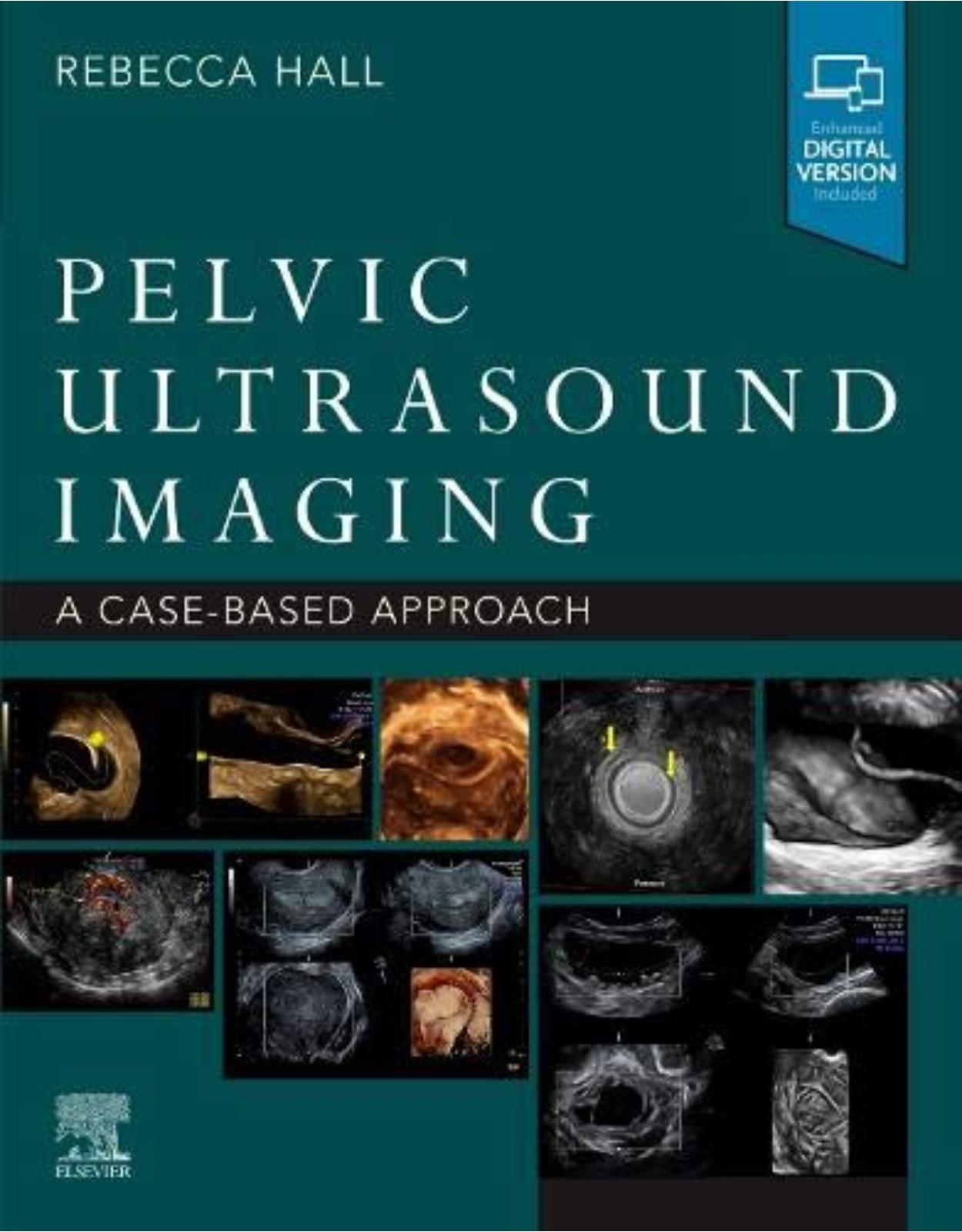

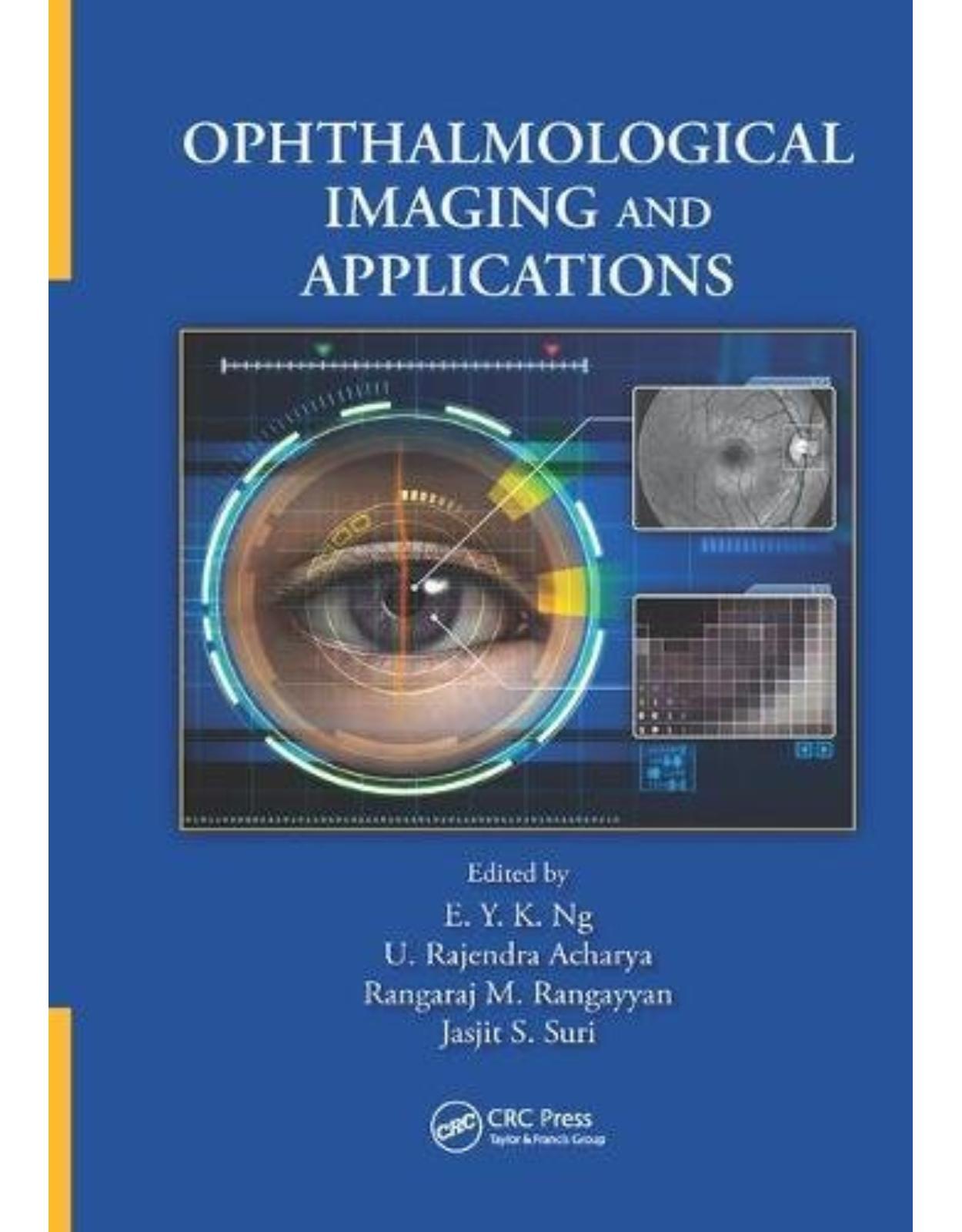
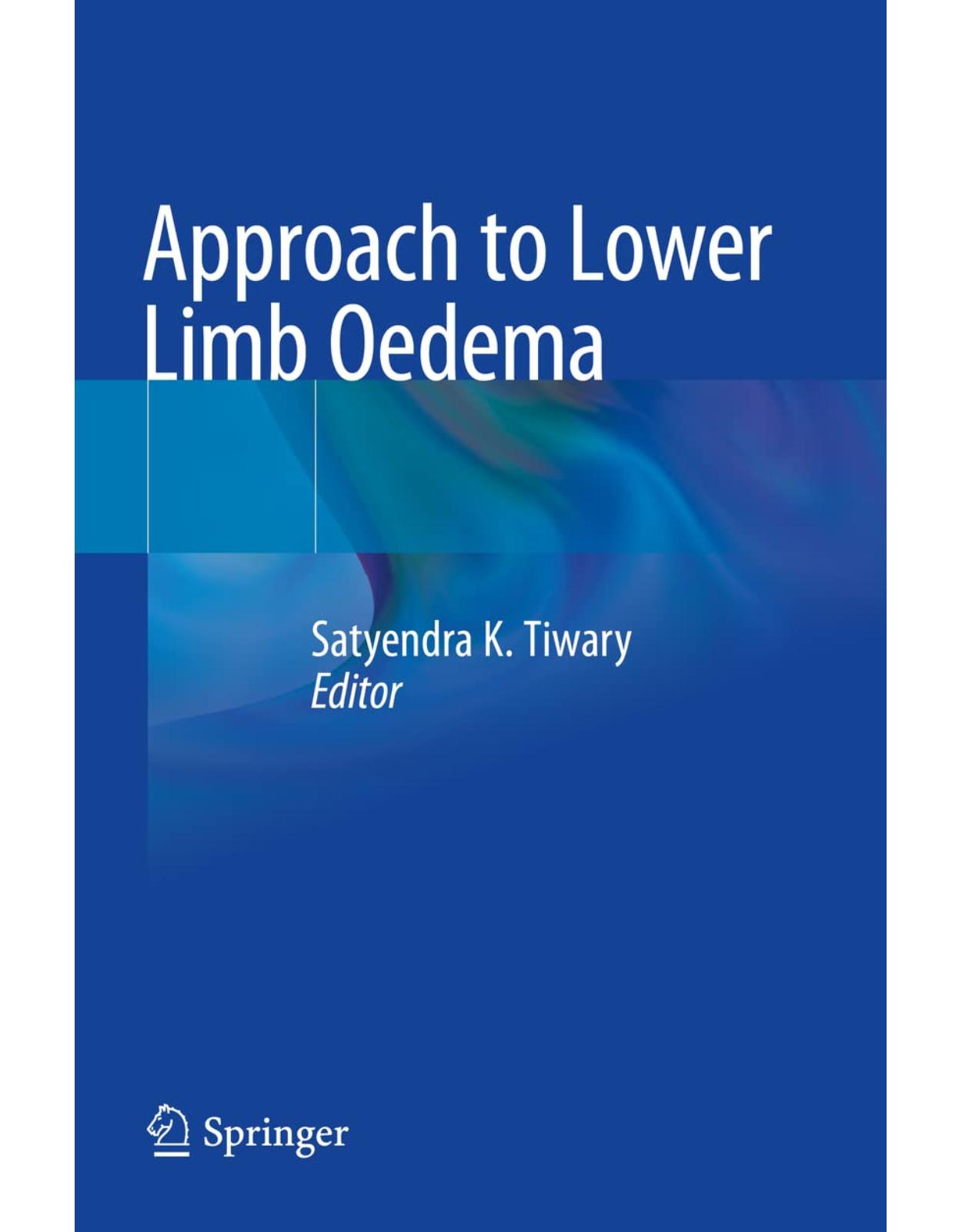

Clientii ebookshop.ro nu au adaugat inca opinii pentru acest produs. Fii primul care adauga o parere, folosind formularul de mai jos.